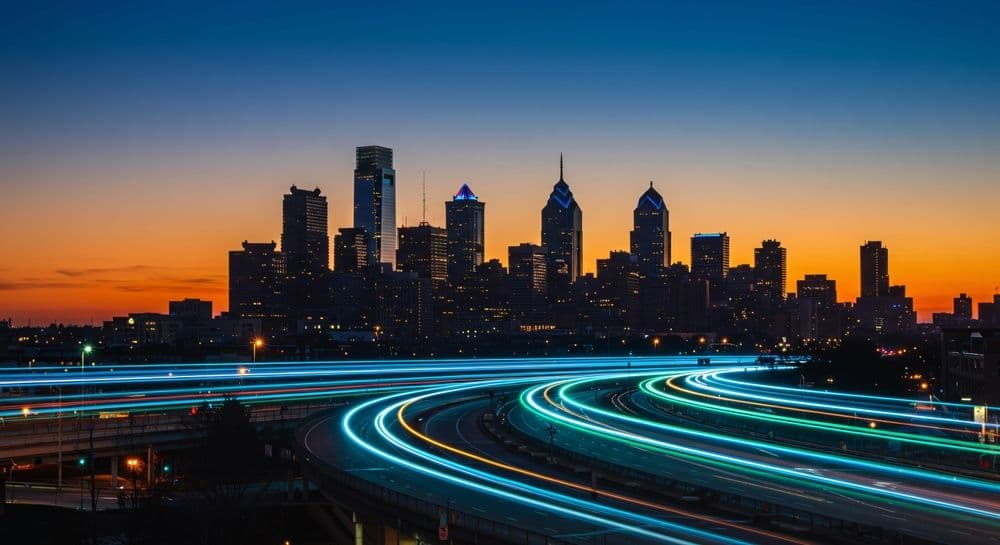Smart cities are no longer a vision of the future, they are rapidly becoming a reality. By integrating advanced technologies with urban planning, these cities aim to create efficient, sustainable, and highly livable environments.
As global populations continue to urbanize, real estate sits at the heart of this transformation. From AI-driven property management to IoT-connected homes, the built environment is being reimagined to meet the demands of tomorrow’s cities. This article explores how smart cities are shaping real estate and what it means for investors, developers, and policymakers navigating this evolving landscape.
Technology: The Backbone of Smart Cities
Technology is the driving force behind smart cities, fundamentally changing how buildings, infrastructure, and urban services operate.
Key innovations shaping this transformation include:
- Internet of Things (IoT): Connected sensors and devices that enhance energy efficiency, security, and automation in both residential and commercial spaces.
- Artificial Intelligence (AI): AI-powered analytics that improve property management, predictive maintenance, and real-time urban planning.
- Blockchain and Smart Contracts: Streamlined property transactions, real estate tokenization, and enhanced transparency for buyers and sellers.
- 5G Connectivity: High-speed, reliable internet infrastructure that enables seamless communication between smart devices and platforms.
These technologies are converging to deliver smarter, more responsive buildings and communities, while optimizing costs and improving quality of life for residents.
Building a Sustainable Future
Sustainability is a cornerstone of smart city development. Today’s real estate projects are increasingly focused on green building practices and energy efficiency, helping to reduce environmental impact and promote long-term resilience.
Sustainable innovations include:
- Net-Zero Energy Buildings: Properties that generate as much renewable energy as they consume.
- Smart Grids and Energy Optimization: AI-powered systems that manage and reduce energy usage while integrating renewable sources.
- Eco-Friendly Materials: Use of sustainable construction materials to minimize carbon footprints.
- Water Conservation Technologies: Smart irrigation systems and water recycling to preserve resources.
By embedding these practices into urban planning, cities are reducing waste, cutting emissions, and creating healthier environments.
Smart Residential and Commercial Spaces
Real estate is adapting to the needs of modern urban residents by delivering innovative living and working spaces.
- Smart Homes: Integrated technology like voice-controlled lighting, smart thermostats, and remote security systems to enhance convenience and safety.
- Co-Living and Shared Spaces: Digitally connected, flexible housing solutions that meet the needs of younger, mobile populations.
- AI-Enhanced Office Buildings: Intelligent systems for space optimization, smart lighting, and automated facility management.
- Mixed-Use Developments: Combining residential, retail, office, and recreational areas to reduce commutes and create vibrant communities.
These trends are redefining how people live and interact with urban spaces.
Mobility and Real Estate: A Connected Future
Smart transportation is transforming city planning and real estate design by prioritizing accessibility and seamless mobility.
Key mobility-driven changes include:
- Autonomous Vehicles and Public Transit: Reducing reliance on private cars and reshaping parking and road infrastructure.
- Pedestrian-Friendly Design: Walkability and cycling paths integrated into residential and commercial developments.
- Mobility-as-a-Service (MaaS): Digital platforms connecting real estate with on-demand transportation options.
- High-Speed Transit Solutions: Projects like hyperloop systems and high-speed rail influencing property values and urban expansion.
For developers, proximity to efficient transport hubs has become a critical factor in property value.
Investment and Development Strategies
The evolution of smart cities is reshaping real estate investment strategies and business models.
- Data-Driven Decisions: AI analytics provide valuable insights into demand patterns, risk assessment, and market trends.
- PropTech Integration: Tools like digital twins and virtual reality (VR) enhance project planning, marketing, and sales.
- Public-Private Partnerships: Governments and private companies collaborate on large-scale projects to accelerate growth.
- Adaptive Reuse: Transforming older buildings into smart-enabled spaces to meet modern requirements while preserving urban heritage.
These strategies create opportunities for investors and developers to stay competitive in a rapidly changing market.
Challenges on the Road to Smart Cities
While the potential of smart cities is immense, several challenges must be addressed:
- High Initial Costs: Significant capital is required to develop smart infrastructure and implement advanced technologies.
- Cybersecurity Risks: Greater connectivity brings vulnerabilities around data protection and privacy.
- Regulatory Barriers: Governments need to establish clear policies and frameworks to support smart development.
- Digital Divide: Ensuring equitable access so all communities can benefit from smart city advancements.
Addressing these issues is essential to ensure that smart cities are inclusive, secure, and sustainable.
Smart cities and real estate are evolving hand in hand. As technology and sustainability continue to shape the future of urban living, developers, investors, and policymakers must adapt to new opportunities and challenges.
By embracing innovation and prioritizing sustainable practices, the real estate industry can play a pivotal role in building future-proof cities — urban environments that are not only efficient and connected but also equitable and livable for generations to come.




